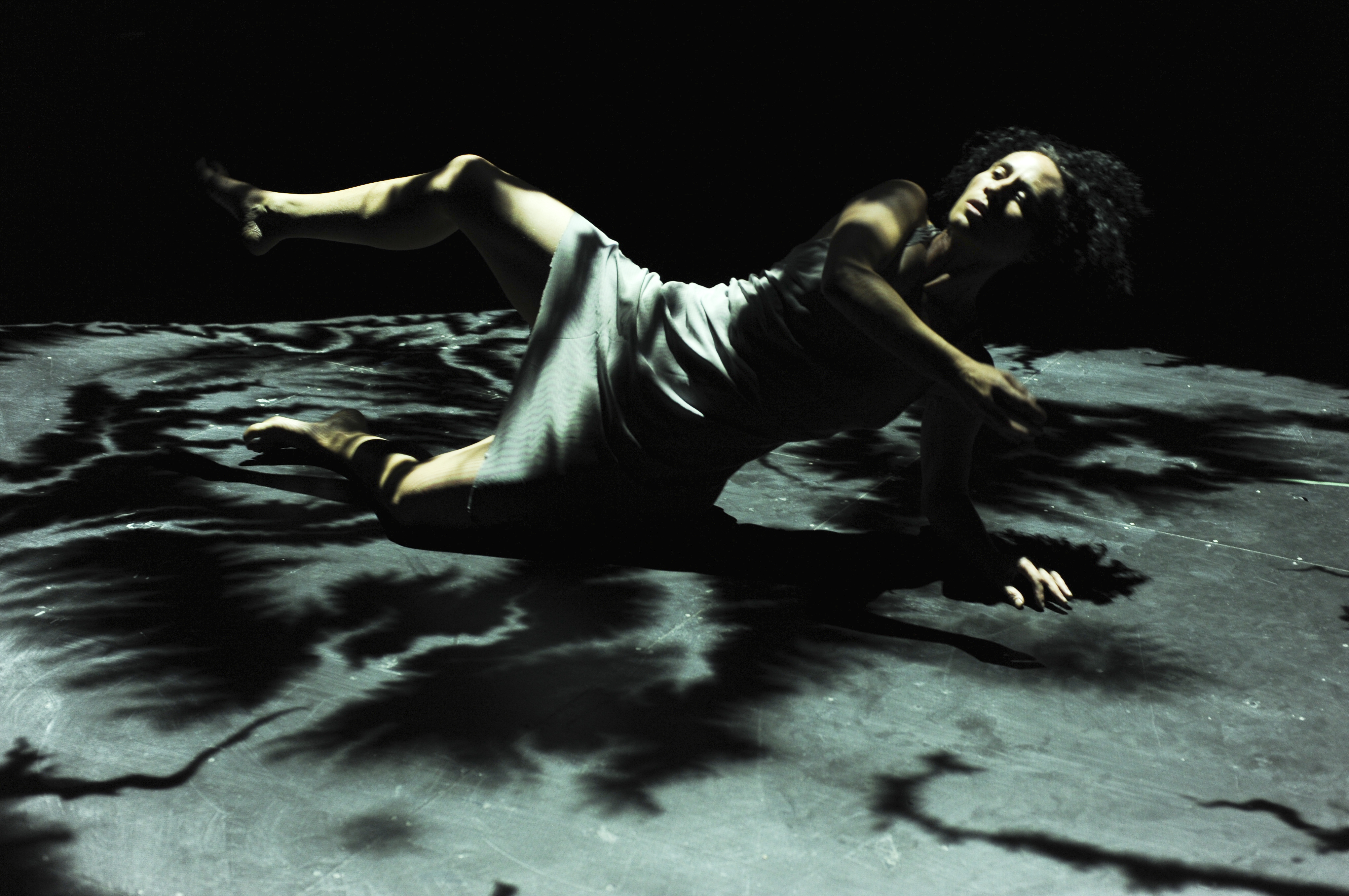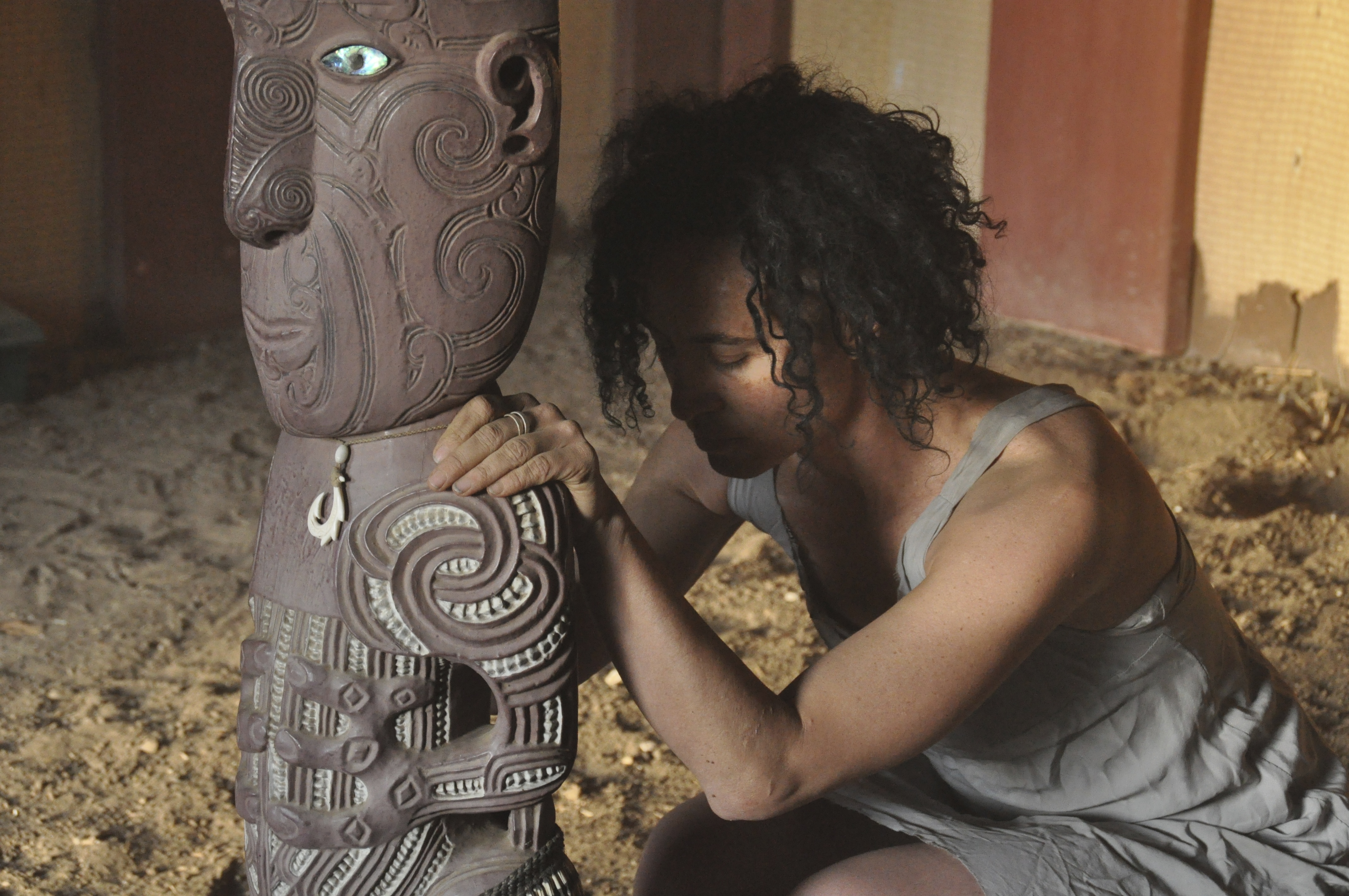The Fascinating Multimedia Solo Dance Performance that is Copper Promises: Hinemihi Haka
January 22, 2019
By The Dance Centre
Published on January 22, 2019
Australian dance artist Victoria Hunt’s powerful solo Copper Promises: Hinemihi Haka continues our Global Dance Connections series January 31-February 2. Our Executive Director Mirna Zagar talks to Digital Marketing Coordinator Lindsay Curtis about the artist and the work.

Lindsay Curtis: Tell us about Victoria Hunt and Copper Promises: Hinemihi Haka.
Mirna Zagar: Victoria Hunt is an Australian choreographer, performer and visual artist who is of Maori origin. I first saw Copper Promises at the IMPACT 15 International Theatre Festival in Kitchener in 2015, and I was immediately drawn to the concept, the performative quality, and the process behind it. Thanks to the internet, colleagues from “down under”, and the PuSh Festival I have continued to follow Victoria’s work, and I am thrilled that our joint interest made it possible to present them in partnership with the PuSh International Performing Arts Festival this year.
Describing Copper Promises doesn’t do it justice – it really needs to be experienced, as Victoria is such an incredibly compelling performer and the work is so honest and heartfelt. It is a fascinating, multimedia solo dance performance, a journey through time and history that goes beyond a single individual. In this work Victoria embodies the spirit of their ancestor Hinemihi (which is also a meeting house or marae which embodies her), reconnecting to their Maori family (whanau).
The work is a result of a decade-long journey of Victoria investigating their own history, a desire to repatriate with their homeland and tradition, and it also speaks strongly to the contemporary context of cultural plurality, belonging, and identity. In 2003 Victoria went to New Zealand and met their relations for the first time and learned tribal stories and ceremonial practices. A massive volcanic eruption in 1886 displaced their ancestors from the land. Hinemihi – the carved ancestral meeting house where survivors had gathered to shelter from the eruption – was left there until they could return. Assumed abandoned, Hinemihi was ‘acquired’ by the Earl of Onslow and transported to his home in Surrey, England, and remains there to this day.

This work is rooted in the principles of BodyWeather, a contemporary dance form instigated by Japan’s butoh master Min Tanaka, which transforms the body through images. Victoria embodies specific images that dance out with the landscape, their Maori traditions and the spirit of Hinemihi.
LC: What prompted you to bring Copper Promises to Vancouver?
MZ: There are many factors. There is a longer process of following an artist’s work over time; I also always look to provide appropriate context. Bringing international work is expensive, so working with partners such as PuSh helps extend our scope. This particular work delves into complex ideas of belonging, home and ancestry through the body, language and dance. These are concepts which resonate with me personally, as a migrant who has lived on three continents, and an immigrant to Canada. We have been witnessing the unfolding of the history of Canada’s Indigenous peoples, something that needs to be acknowledged, learned about and understood. For how can we move forward without acknowledging the traditions and the history of this land, and how recent events have impacted the lives of Indigenous peoples?
I am fascinated how artists approach and present these complex ideas, and to observe how different practices meet Indigenous cultural and conceptual spaces, and the infusion of the impact of contemporary urban life. We experience daily fragmentation of lives, disconnection among communities, gaps in historical memory, and longing for rediscovery.
Art can help us manoeuvre through this maze and help us solidify our sense of what our role in this world is, and who we are.
LC: What kind of experience can audiences anticipate?
MZ: Copper Promises is somewhat eerie. There is a lot of stunning computer-generated imagery, and dramatic lighting and sound. The movement itself is simple and quite sculptural, but Victoria is a very charismatic performer – I often found myself wondering what I am seeing; an animal, a bird, a mystery creature? It all results in a fierce, visceral experience which is very absorbing and quite chilling, and at the same time inspiring and hopeful, with a powerful sense of catharsis at the end. A primordial-meets-high-tech sort of experience, but still very human at its core. As audience members we give in to the experience and allow ourselves to be part of this journey through time and space.
LC: Do you see increasing connections between Indigenous dance artists around the Pacific Rim?
MZ: Yes! BC’s Indigenous dance practitioners have become well-connected to national and international developments, touring their works and collaborating with artists from Hawaii, Australia, and New Zealand, as well as Asian and Scandinavia. I am very proud that The Dance Centre has over the last twenty years supported Indigenous artists including Margaret Grenier, Michelle Olson, Byron Chief Moon, Yvonne Chartrand, Mique’l Dangeli, Starr Muranko and Olivia C. Davies through the full spectrum of our artistic development programs. Margaret Grenier and the Dancers of Damelahamid have just completed a technical residency for their new production Minowin (to premiere at The Cultch next season), which is a collaboration with Charles Koroneho from New Zealand. Starr Muranko’s Spine of the Mother was a collaboration with Indigenous artists in Peru.
This season, Olivia C. Davies has a major residency which will culminate in June with a weekend of work by female Indigenous artists. I hope that we have been able to play a role in helping to build stronger foundations for Indigenous dance makers here in BC, as well as expanding the ecology and understanding of their work.